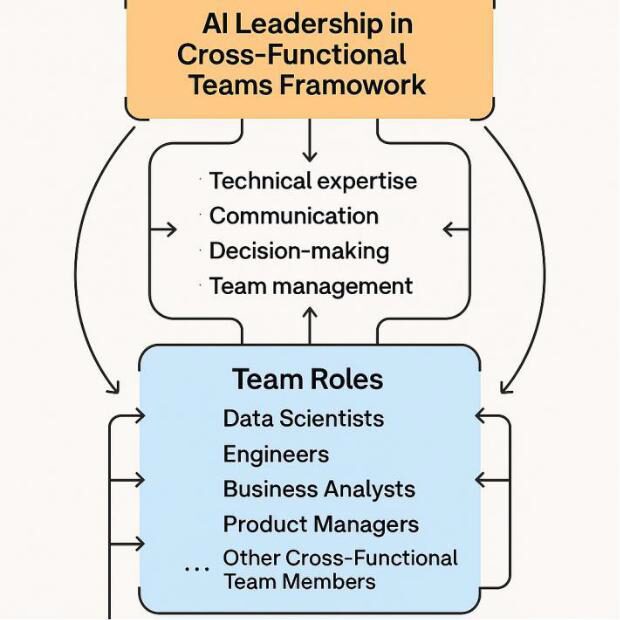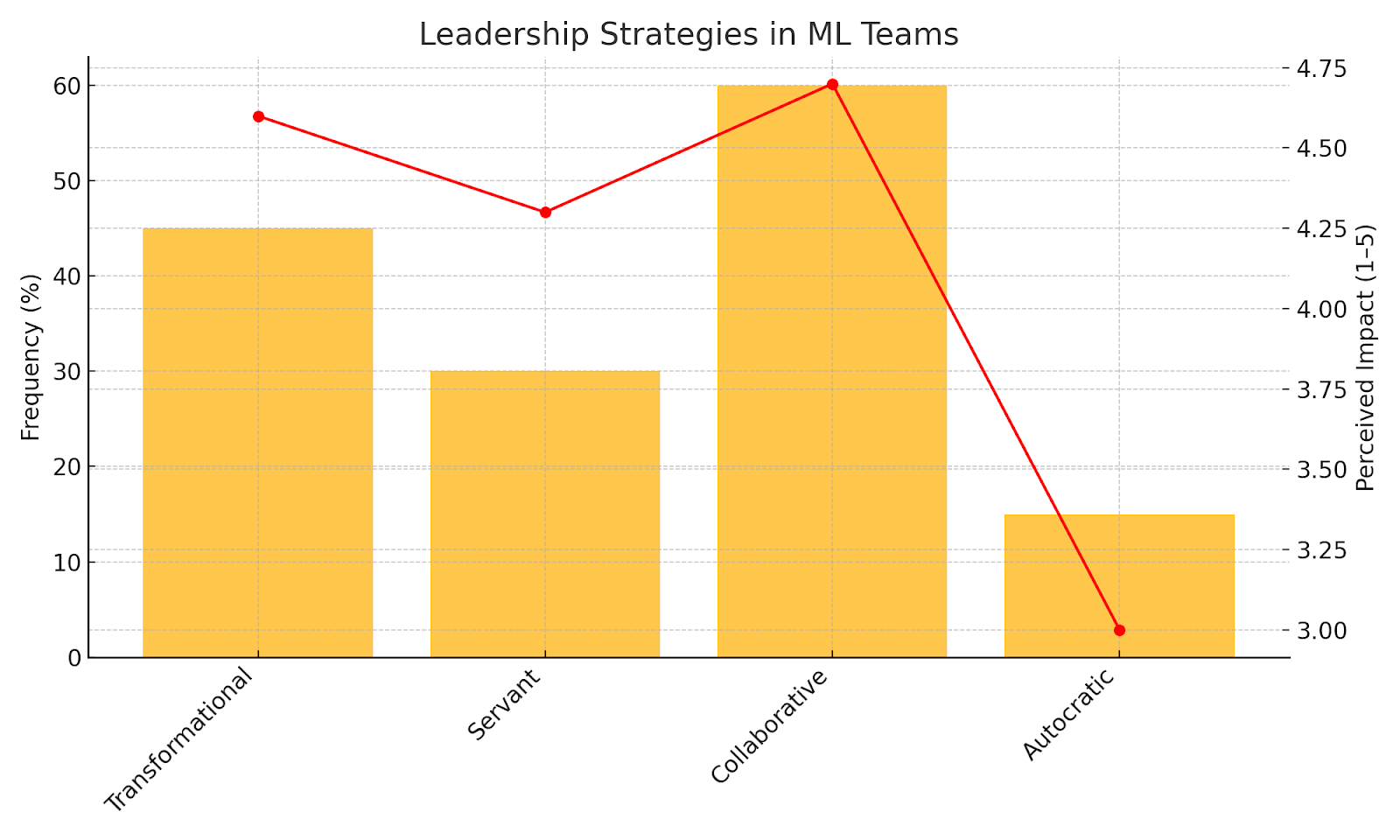Introduction
Machine-learning (ML) initiatives are often viewed through the lens of data pipelines, model performance, and infrastructure. However, behind every successful AI product lies a well-led cross-functional team that brings together diverse expertise—data scientists, ML engineers, software developers, domain experts, and product stakeholders. Leading such diverse teams demands more than technical knowledge. It requires empathy, communication skills, strategic foresight, and ethical responsibility.
This article explores effective leadership strategies tailored for AI and ML environments. Drawing from real-world practices, it covers key styles, collaboration frameworks, risk management techniques, and communication patterns that enable impactful AI delivery at scale.
Leadership Strategies That Work
In cross-functional AI teams, leadership cannot rely on a one-size-fits-all approach. Agile methods and creative problem-solving thrive best when leaders adopt flexible strategies based on context. Below is a comparative summary of leadership strategies commonly observed in AI project teams:
| Leadership Strategy | Frequency of Use (%) | Perceived Impact (1‑5) | What It Looks Like |
| Transformational | 45 | 4.6 | Inspires shared vision, drives innovation and continuous learning. |
| Servant | 30 | 4.3 | Prioritizes team empowerment and removes barriers. |
| Collaborative | 60 | 4.7 | Enables shared ownership, inclusive decision-making. |
| Autocratic | 15 | 3.0 | Used during crises requiring quick decisions. |
Transformational and collaborative leaders are especially effective in AI because they create a safe space for iteration and challenge traditional thinking. These leaders are less concerned with control and more focused on outcomes, responsibility, and growth.
Communication and Alignment Across Roles
Cross-functional AI teams often experience breakdowns due to misaligned goals and communication gaps. A data scientist may focus on model accuracy, while a business leader cares about ROI. Bridging this divide requires leaders to:
• Establish shared KPIs
• Use inclusive, jargon-free language
• Foster psychological safety for open feedback
• Encourage demos and cross-team pairing
High-trust environments allow for early surfacing of issues, timely course correction, and ultimately more robust AI systems.
Ethical Risk Management in AI Projects
AI systems can perpetuate bias, compromise privacy, or create unintended harm if deployed without ethical foresight. Leadership must embed responsible AI practices such as:
• Pre-launch model audits
• Documentation with model cards
• Inclusion of ethics reviewers in design phases
• Ensuring fairness across sensitive attributes
A culture of responsibility isn’t optional—it’s essential to ensure ML solutions are trustworthy, compliant, and socially beneficial.
Statistical Evaluation
Survey data analysis supported the assessment of relationships between leadership styles and team performance metrics that consisted of productivity and innovation alongside overall project achievements. Statistical testing combining Pearson’s correlation coefficient examined how leadership styles affecting team performance during project completion periods alongside team satisfaction and innovation measures.
Synthesis of Findings
Research reveals complete awareness of AI leadership practices which function specifically in ML teams that combine different areas of expertise. The main implications from this research show that leadership in ML settings surpasses tech expertise through its power to handle complicated scenarios while uniting different fields along with creating teamwork among numerous team members. Among
the leadership approaches used to handle cross-functional team dynamics researchers found transformational as well as servant and collaborative leadership proved most effective. All these leadership methods helped leaders generate innovation and sustain trust and allowed them to facilitate decision-making inclusivity. The research
proved that organizations achieved better project results by implementing team-based decision systems coupled with clear communication
methods. Leadership approaches with a hierarchical structure proved successful only when specific conditions existed such as time-sensitive project needs or strictly defined project structure.
Conclusion
Technical excellence alone cannot drive AI success. Great leadership is the hidden layer enabling innovation, collaboration, and responsibility. By applying strategic leadership principles—flexible management, transparent communication, ethical foresight—AI teams are better equipped to deliver sustainable, scalable, and impactful products.
As AI evolves, so too must our leadership strategies. The future will favor those who lead not just with intelligence, but with integrity and inclusion.
About the Author
Vidyasagar Vangala is an IT Project Lead with extensive experience managing AI, cloud, and DevOps teams. He is the author of *Cloud Technologies with a Focus on AI Integration and Automation*, and has published widely in outlets such as TechBullion. He champions ethical AI development and cross-functional leadership in complex tech projects.









